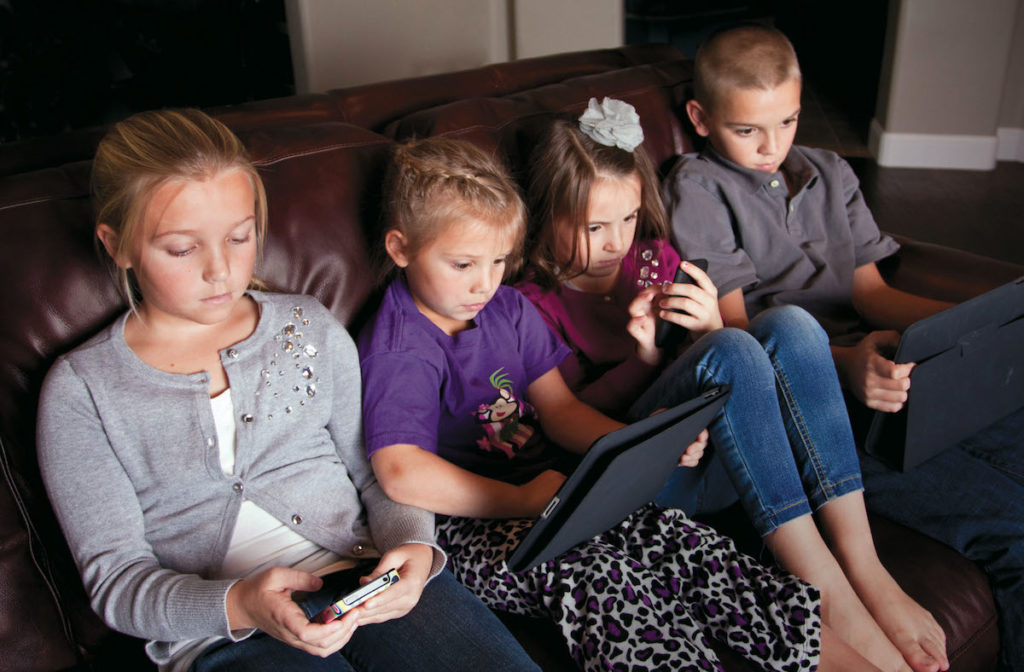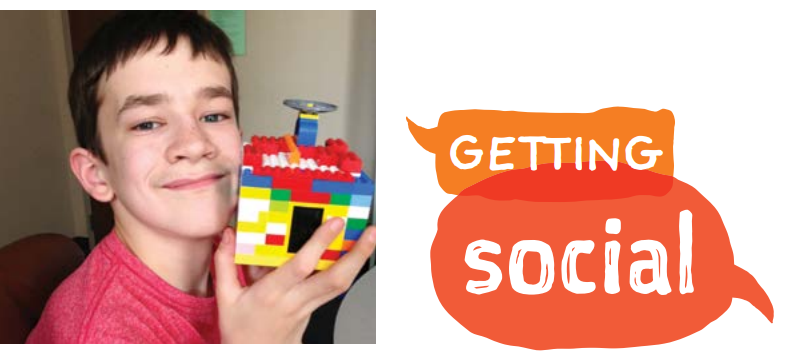How parents can help kids manage technology use — at school and at home.
This fall, my 8-year-old daughter started third grade. She also received a Chromebook, provided by the school to support her education. And we embarked on a new challenge as a family — how to help our child balance technology use.
Technology is a part of our lives — for both parents and kids. And learning tech skills is critical to ensuring that our children are ready to compete in a global economy.
And now, thanks to the availability of individual devices, schools can more easily offer personalized learning options for students. Many districts throughout the state have become 1-to-1 districts, which means that each child is provided with a device — usually a Chromebook or an iPad — for academic purposes.
Most 1:1 devices travel everywhere with a student, including home. With this provided device comes incredible access to a mind-boggling amount of information. However, it also demands incredible responsibility from both parents and kids.
That includes how to take care of the device and avoid damage fees; how to manage time; how to practice self-control using the device for — mostly — academic purposes; and learning the basics of digital citizenship.
As parents, it’s an overwhelming prospect and many of us don’t know where to begin. How will our kids learn to navigate the digital world? How can we best support them to ensure technology becomes a part of their lives, but not the central focus? How can we model and enforce responsible technology use without becoming too restrictive?
To find out, we dug into the research and probed the minds of local and national experts. Here are four simple steps families can take to tame their technology use at home (and away).
Step 1
Understand the brain
Right now, we don’t know the long-term impact of technology use on developing brains because there isn’t enough available research with definitive results.
However, some alarming research has surfaced recently about the potential side effects of technology use and screen time on kids. With excessive use (not necessarily moderate use), kids can face developmental delays and decreased brain matter; behavioral issues; decreased cognitive performance; and decreased verbal capabilities.
While these studies were published by pediatric journals and the U.S. National Institutes of Health, related news stories often gloss over some of the studies’ complexities. Although there may be an association between screen time and certain factors, an association isn’t the same thing as a cause-and-effect relationship.
And yet, pediatric researchers and physicians do know that tech use impacts brain chemistry.
Local pediatrician Dr. Allison Golnik, who works at M Health Fairview Children’s Clinic in Minneapolis, references the work of pediatric endocrinologist Dr. Robert Lustig in his book, The Hacking of the American Mind: The Science Behind the Corporate Takeover of Our Bodies and Brains.
In a nutshell, screen time increases dopamine, a “reward” neurotransmitter that makes people feel pleasure. Dopamine also can be increased through substances (such as addictive drugs and sugar) and behaviors (such as exercise).
Meanwhile, serotonin, the “contentment” neurotransmitter, is increased through interpersonal relationships, the satisfaction of overcoming challenges and making personal contributions, such as helping a friend. (Exercise can also boost serotonin levels.)
Serotonin, however, Lustig argues, can become overwhelmed by our bodies’ drive for dopamine and the constant quest for more of it through sugar, drugs and even social media use.
Kids in front of screens can suffer too through the displacement other activities, such as exercise, physical touch, hands-on exploration of the world and face-to-face social interaction, all of which are important to learning and development, not to mention and two other feel-good neurotransmitters — endorphins and oxytocin.
Step 2
Create a tech plan
Like many things in life, too much of a good thing can be damaging, and balance is key.
But, how can we help our kids maintain a healthy balance of tech use when it seems so addictive?
Dr. Delaney Rushton, a Stanford-trained physician and creator of the award-winning film Screenagers, advises having discussions with your kids about how to manage technology.
Rushton recommends something like her own family’s “Tech Talk Tuesday,” a planned conversation each week between kids and parents about technology in their lives. Rushton also encourages parents to give kids some input about how the family structures tech parameters. For example, when it’s time to turn off devices, Rushton suggests asking kids, “Is it better if I give you a 5-minute warning or a 10-minute warning?”
Golnik — a mother of three and a pediatrician with more than 12 years of experience — has also found a collaborative approach to be most effective. She suggests starting the conversation by asking kids: Do you like screen time? Then, do you think screen time is good or bad for your brain? Do you think you do too much screen time, or a healthy amount?
“Technology is right here and we need to deal with it,” Golnik said. “It’s so ingrained into our culture. We can’t tell kids it’s horrible and you can’t have it.”
Instead of trying to completely restrict technology use, work with your kids to develop a family technology plan. Be consistent and ensure all family members follow the agreed plan.
Sites such as healthychildren.org and commonsensemedia.org offer excellent resources for creating family technology plans.
Tasha Guswiler of Bloomington, a mother of two girls and an elementary art teacher in Prior Lake, shared her family’s technology norms: “During the school year, screen time comes after everything else. Homework, meals and family time take priority over everything. Weekends are a little bit more flexible, as long as the to-do list is done.”
Step 3
Set clear boundaries
Although designing a technology plan together as a family is ideal, sometimes clear boundaries must be defined. Parents should feel empowered to take away a device when necessary — even if it was provided by school — and especially if its use is interfering with sleep.
Schools provide devices to enrich a child’s academics, not to cause sleep deprivation. Even after your child turns off a device, its use prior to bedtime can impact quality of sleep.
“It has long been known that use of screens correlate with lower quality sleep in children,” Golnik said. “Pediatricians always recommend no screens (TV, computer, smart phone) for one to two hours prior to going to bed. More recently, we know the blue light from screens suppresses melatonin, which interferes with sleep.”
Some parents decide to get creative by working with technology instead of against it.
Carrie Sophaphanh, a mom of three from Bloomington, is able to use her home’s Wi-Fi network to set screen-time limits: “Each device has a ‘bedtime,’ when it no longer works, as well as a daily screen-time limit. I can also change the amount of screen time, depending on the day. On the weekends, my kids can earn more screen time.”
Step 4
Model balanced behavior
Whether we like it or not, kids pay far more attention to what we do than what we say. While it’s tempting to check a text during dinner or scroll through the news headlines during a lull in conversation, being mindful of the precedents we’re setting is critical.
Rushton cautions against handing kids a device as a distraction when they’re bored or upset, and urges parents to consider if we’re “training kids to turn to a screen whenever they’re uncomfortable or upset.”
To maintain focus on positive interactions, many families try adopting “device-free dinners.” Meals offer valuable time for engaging as a family and modeling how to have enjoyable conversations.
If we want our kids to continue talking to us and sharing their lives with us, we need to be fully present now — even if it means listening to them categorize every Hatchimal or Transformer they own.
Thrive Global blogger Pauline Harley also recommends cultivating a practice of being present by unplugging from time to time: “Disconnect so you can reconnect. Think about how social media, emails and technology, in general, can overcrowd our time and energy.”
Next time you and your kids walk to the park, try leaving your phone at home — on purpose. Parents have the power to make a huge positive impact: We can teach children to responsibly balance technology by modeling how to do it in our own lives.
How much screen time is OK?
The most recent media-use recommendations for children from the American Academy of Pediatrics include:
» Zero screen time, except video chatting, for ages 0–18 months
» One hour or less per day of high-quality programming (such as Sesame Street) for ages 2–5 years
» Two hours or less daily for ages 6 and older, plus consistent limits and ensuring technology use doesn’t take the place physical activity or disrupt or reduce sleep.
Laura Ramsborg is a literacy coach, writer and mother of three daughters. She lives and works in Bloomington. Follow her on Twitter at @Ms.RamsborgReads.






















